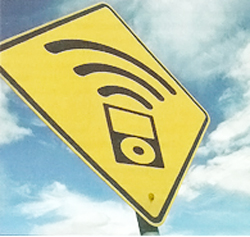It’s one of those debates that seems to go on forever, and has been discussed heavily in professional audio and hi-fi circles during the “digital era” that began in the early 1980s with the advent of the compact disc: Can people hear anything above 20 kHz?
And if so, does it matter?
As it turns out, this has been an important subject in scientific and medical circles.
In a 2003 article by Martin L. Lenhardt, Au.D., Ph.D., entitled Ultrasonic Hearing in Humans: Applications for Tinnitus Treatment, the author states “Human ultrasonic hearing has been independently ‘discovered,’ documented, and abandoned more than a dozen times over the last half century. So outlandish is the concept that humans can have the hearing range of specialized mammals, such as bats and toothed whales, that ultrasonic hearing has generally been relegated to the realm of parlor tricks rather than being considered the subject of scientific inquiry.”
In this particular article, the concept of treatment for hearing loss via the use of bone-conducted ultrasound is explored and offered as a viable option. In his summary, the author states: “Humans can detect ultrasound up to at least 100 kHz, but perception generally requires direct contact of the source with the body.”
This is interesting, if perhaps not completely practical or even relevant for those of us in the professional audio field.
But it’s more relevant than you might think.
LAW OF DIMINISHING RETURNS
Of course we should all be concerned about the future of professional audio and the consumer formats used by our ultimate customers.
But at what point do these efforts start to create little or no benefit for the increased cost and complexity? (Don’t even start me on the format wars…)
And let’s get one thing straight: consumers don’t really care if the original sampling rate was 44.1 kHz or 192 kHz. Most people probably wouldn’t notice even if it was 22.05 kHz!
In fact, before the advent of the CD, the reigning consumer format was the cassette. Remember those things? You probably still have a few dozen or even a few hundred of them floating around, gradually becoming demagnetized audio horrors 1-7/8 inches per second at a time.
The compact cassette was never meant to be used for full-band audio, but instead was intended for speech only. But that didn’t stop it from becoming the number 1 format in terms of units sold during the decade between 1978 and 1988. There were even a number of movements in the 1970s to introduce improved versions of the cassette, with greater tape widths and faster tape speeds, all of which failed.
Dolby and dbx offered improved signal-to-noise performance but unfortunately were not universally used or understood. Why was the cassette so popular? Simple: it was inexpensive, portable, robust and recordable.
So what if the LP offered far superior audio quality if used properly? That last part is the key. For the average user, the LP was a fragile, expensive and frankly, crappy-sounding format that got worse with every play.
How many typical consumers did you know (or did your parents know) that had a really decent LP playback system? Sure, the potential was there but only very seldom was it reached.
Ironically, only after the advent of the CD did the true potential of the LP emerge during its “Indian Summer” during the late 1980s and early 1990s. Meanwhile, the cassette lived on in HUGE numbers well into the 1990s.















